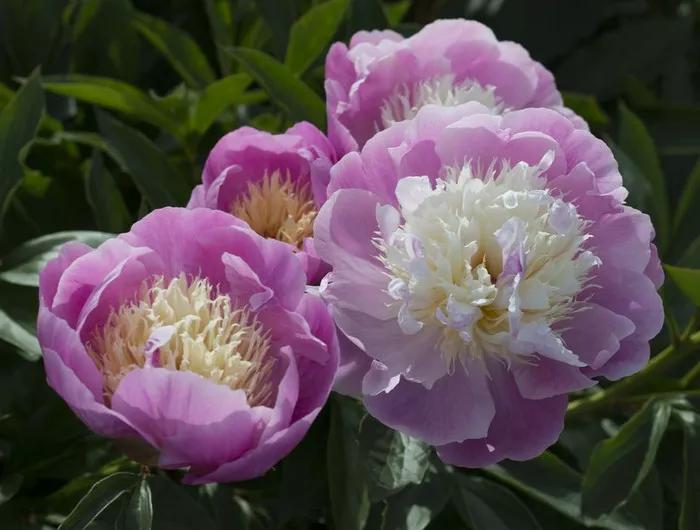In Strasburg, peony enthusiasts Rochelle Dornatt and Mary Jane Korrigan, both Master Gardeners of the Northern Shenandoah Valley, are already planning ahead as the last petals fall from their beloved peonies.
Reflecting on the nostalgic appeal of these blooms, Korrigan reminisces about her childhood encounters with peonies in her grandmother’s garden, describing them as a cherished memory.
Originally revered as China’s national flower and cultivated for medicinal purposes, peonies have evolved into a favorite among gardeners for their beauty and fragrance.
“Peonies are captivating in their own right,” Korrigan observed while admiring a selection from Dornatt’s garden, echoing a sentiment shared by many garden enthusiasts.
Dornatt categorizes peonies into three main types: herbaceous, which are known for their large, extravagant flowers; tree peonies, characterized by their multi-stemmed woody shrub appearance; and intersectional, hybrids that combine features of both herbaceous and tree peonies. Within these types, there is a wide variety in shapes, sizes, and colors.
Native to Asia, Europe, and western America, peonies exhibit six distinct flower forms, each with unique characteristics in petal arrangement and stamen structure.
Observing a bee navigating her peony garden, Dornatt described the insect’s determined effort to collect pollen as a fascinating sight. “It really had to push its way into those petals,” she remarked, impressed by the bee’s persistence.
Initially limited to white, pink, and crimson hues, peony varieties have expanded dramatically over the decades due to cross-breeding and introduction of new cultivars.
Dornatt emphasized that peonies thrive with minimal care, particularly when planted in the fall. “They are cold-hardy plants, requiring a winter chill to stimulate bud formation,” she explained. Once established, these resilient plants can endure for generations with proper care.
Korrigan, surrounded by the delightful fragrance of peonies at home, suggested various ways homeowners can integrate these flowers into their landscapes, such as along walkways or as standalone bushes that transition beautifully through the seasons.
Both gardeners stressed the importance of choosing the right location for peonies, ensuring they receive adequate sunlight and ample space for optimal growth without competition from nearby trees or shrubs.
“Before planting, it’s crucial to conduct a soil test,” Korrigan advised, underscoring the importance of understanding soil conditions for successful gardening.
As summer gives way to fall, peony seed pods mature and split open naturally. Dornatt recommended collecting these seeds promptly to avoid diseases associated with prolonged exposure to humid conditions.
Preparing peony plants for winter involves cutting them back to ground level, leaving a short stubble that helps protect them during colder months—a practice unique to these resilient flowers.
Unlike many plants, peonies can be divided and transplanted in the fall, which benefits larger plants and encourages continued vigor.
“With minimal maintenance, peonies can provide beauty and enjoyment for many years,” Dornatt concluded, echoing the sentiment of many dedicated gardeners who cherish these enduring blooms.

